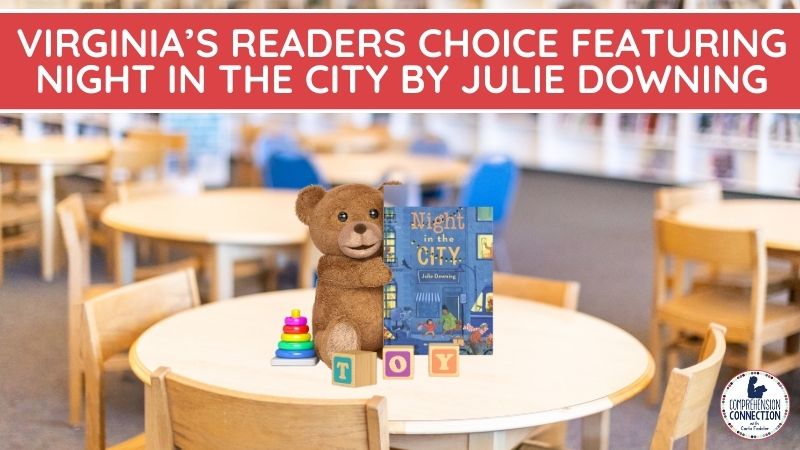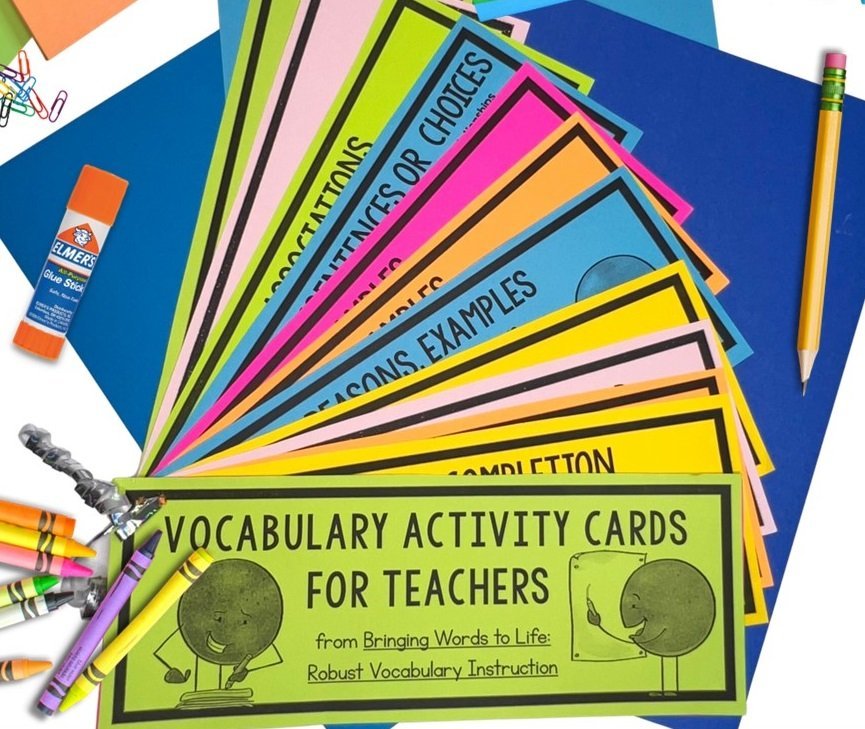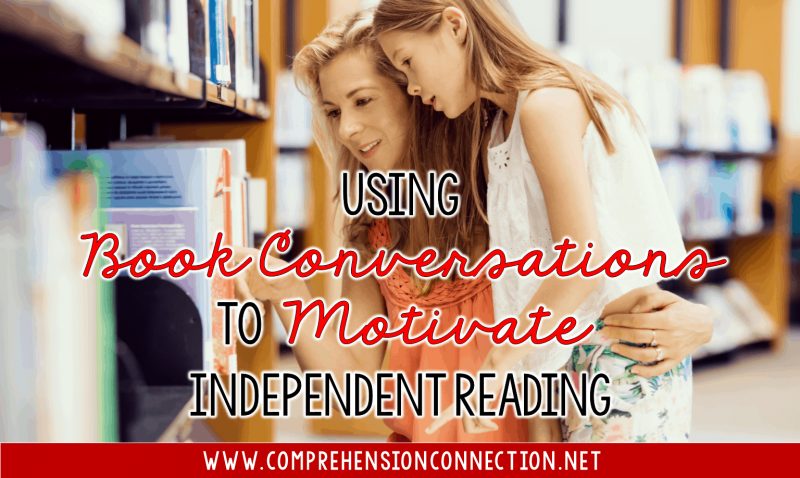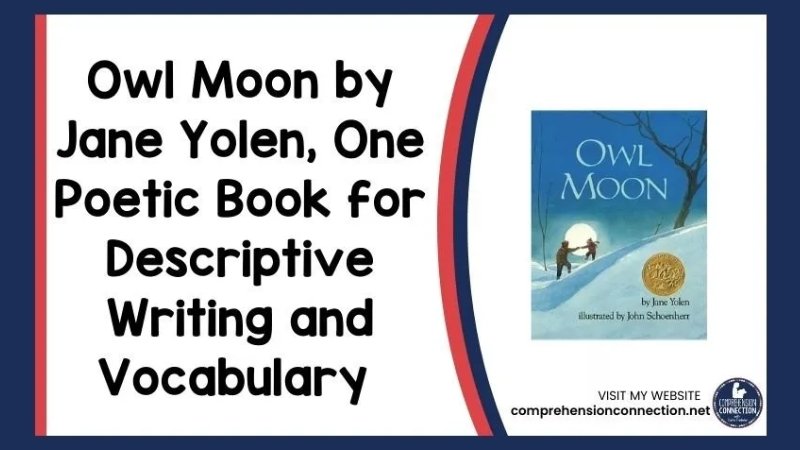
Owl Moon has to be my all time favorite picture book for winter, and it’s a wonderful choice as a poetic story for teaching descriptive writing and vocabulary. In this post, I’ll share some of my favorite teaching ideas to help you make use of this wonderful text.
Why owl moon is a must read in upper elementary
Owl Moon describes one wintry night when a father-daughter owl watching trip in the middle of winter. Jane Yolen, the author of the book, describes with precision exactly what the snow sounded like as they trudged through the field, how the trees looked as they searched, and what the Great Horned Owl sounded like as he flew off of the tree. I think kids these days, especially those who live in the city, enjoy the experience of reading this book because it helps them picture other parts of the world too.

Another reason Owl Moon is a must read is that it offers lots of examples of figurative language. Here are a few examples of figurative language that you could mark in the book prior to reading it that you can share as exemplars for similes and metaphors in particular
- “Somewhere behind us a train whistle blew, long and low, like a sad, sad song.” (simile)
- “And the moon was so bright the sky seemed to shine.” (imagery)
- “The snow was shining like bleached flour.” (simile)
- “The shadows were the blackest things I had ever seen, blacker than the night itself.” (imagery)
- “The moon made his face into a silver mask.”(metaphor)
- “The trees stood still as giant statues.” (simile)
- “The great horned owl whoo-whooed back to us.” (onomatopoeia)
These examples showcase the author’s skill in using descriptive language to paint a detailed picture of the winter night and the owl-hunting experience.
cOMPREHENSION QUESTIONS YOU MIGHT USE:
Having comprehension questions to use as you’re sharing the read aloud can help keep your students engaged and can help you in modeling the skills you’ve selected for the lesson. Here are a few to help you get started.
- Setting and Atmosphere:
- Describe the setting of the story. How does the author create a wintry atmosphere?
- How does the moonlight impact the mood of the story?
- Character Understanding:
- What is the relationship between the young girl and her father? How does the author convey their bond?
- How does the girl feel during the owling expedition? What details from the text support your answer?
- Imagery and Descriptive Language:
- Identify a passage where the author uses descriptive language to create a vivid image. What words or phrases contribute to this imagery?
- How does the author use sensory details to enhance the reader’s experience of the story?
- Owling Experience:
- Why do the characters go owling? What is their goal or expectation?
- How do the characters react when they finally encounter the owl? What emotions are conveyed in this part of the story?
- Literary Devices:
- Identify a simile or metaphor used in the book. How does it enhance the description or understanding of a particular element in the story?
- How does the author use onomatopoeia in the story? Provide an example and discuss its effect.
- Theme and Message:
- What do you think the author is trying to convey about the experience of owling and the connection between nature and people?
- How does the theme of patience and quiet observation play a role in the story?
- Personal Reflection:
- Have you ever experienced a quiet, magical moment in nature like the characters in “Owl Moon”? Describe the experience and compare it to the story.
- How does the story make you feel? Did it evoke any specific emotions or memories for you?
modeling comprehension skills with owl moon:
If you’d like to have printables and digital pages to go with Owl Moon, check out what’s included in my unit below. The unit has 25 PDF pages as well as a Google Slides version of the same activities.
- Prereading schema build about owls
- Vocabulary activity and cards
- Story elements anchor chart and organizer
- Summarizing information
- Author’s craft anchor chart and text evidence activity
- Sequencing events project and digital organizer
- Author’s purpose
- Questioning task cards and response form plus quiz
- Owl research and report
- Owling Adventures Class Book

work on descriptive writing with owl moon:

Finally, using Owl Moon as a model for descriptive writing provides a real-world example for students to analyze and apply techniques in their own writing. It also allows for a meaningful exploration of the connection between literature, descriptive language, and the reader’s imagination.
Begin by reading Owl Moon aloud to the class. Encourage students to listen actively and visualize the scenes in their minds. As you read, stop at various points to identify and discuss instances of descriptive language like what I shared earlier in this post. Point out similes, metaphors, vivid imagery, and sensory details used by the author.
To engage students in discussion about the impact of descriptive language on the reading experience, be sure to ask questions geared to author’s craft. You might ask questions such as, “How did the author’s use of descriptive language make the story more engaging?” or “Which parts of the story created the most vivid mental images for you, and why?”
The next step is to model descriptive language. You might create an anchor chart with a descriptive work bank or have students write a collaborative paragraph about a specific winter event. You can also work in a lesson on sensory words and imagery.
Included with this unit is a class book option, My Owling Adventure and an owl research option.
grab your owl moon resource:
other winter mentor text posts you might like:
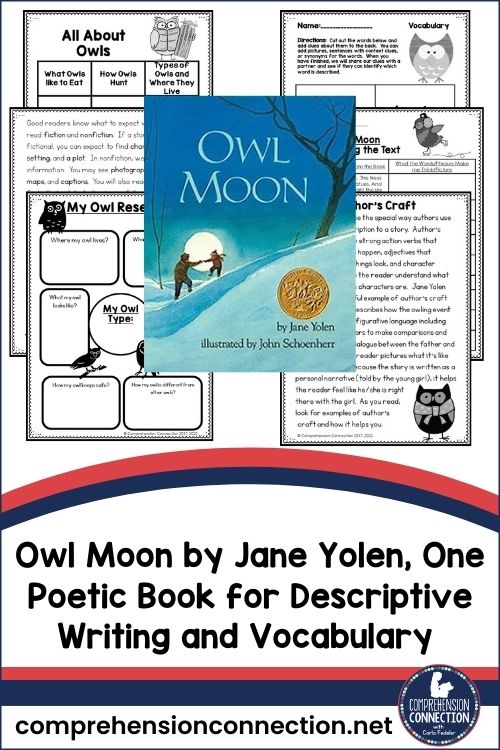
Here on my site, you’ll find other snow stories you might like too. Here are just a few mentor text posts to check out.
- HOW TO TEACH FIGURATIVE LANGUAGE LIKE A PRO WITH THE SNOW DANCER
- CREATING IMAGERY WITH DOGTEAM BY GARY PAULSEN
- 5 SIMPLE LESSON IDEAS FEATURING BEAR SNORES ON YOUR KIDS WILL LOVE
- WHY TWAS THE NIGHT BEFORE CHRISTMAS BY JAN BRETT MAKES A GREAT MENTOR TEXT
Winter is a great time to work on descriptive writing and vocabulary with crisp snow surrounding you and so many great wintry texts. I hope these ideas will help make using Owl Moon easy and effective for your students. If you’re interested in my unit, but prefer purchasing on TPT, click the link below.










